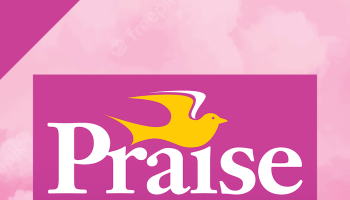 AFTERNOONS WITH AMOS EXCLUSIVE REPORT: Six years after the Great Recession began in 2008, and four years after it officially ended in 2010, one million Hoosiers, including nearly 200,000 African-Americans, continue to feel the recession’s impact as they live their lives below the poverty level; many without jobs. That’s part of the devastating and revealing statistics contained in the 2013 American Community Survey (ACS) released Thursday (September 18th) by the Census Bureau.
AFTERNOONS WITH AMOS EXCLUSIVE REPORT: Six years after the Great Recession began in 2008, and four years after it officially ended in 2010, one million Hoosiers, including nearly 200,000 African-Americans, continue to feel the recession’s impact as they live their lives below the poverty level; many without jobs. That’s part of the devastating and revealing statistics contained in the 2013 American Community Survey (ACS) released Thursday (September 18th) by the Census Bureau.
Afternoons with Amos has begun analyzing the massive database of the 2013 Census ACS and found these points.
- The percentage of families and individuals in Indianapolis – overall and African-American – living in poverty has increased in real terms and remains disturbingly high. For the first time a milestone – 1,015,127 Hoosiers – lived in poverty in 2013.
- Median Household Income for all households and Black households remained stubbornly stagnant in 2013.
- The percentage of Indianapolis households that are homeowners has collapsed in the past four years; reaching a record low.
- For African-Americans in Indiana’s largest city, unemployment remains uncharacteristically, stubbornly high and poverty in the Black community continues growing unchecked.
Here are key highlights from our analysis:
 OVERALL POVERTY – The 2013 Census ACS reports that poverty in Indianapolis ROSE in 2013. The poverty rate for city/county families in 2013 was 17.7%, up from 16.6% in 2012, 16.5% in 2011 and 16.3% in 2010. The poverty rate for families with children in the city/county remained disturbingly stuck at over a quarter of all families with kids. In 2013 25.9% of all families with children lived in poverty. No change from 2012 and down slightly from 2011 (26.5%) and 2010 (26.9%). More than a fifth (21.2%) of all Indianapolis residents lived in poverty in 2013 consistent with the 21.5% in poverty in 2012 and 21.1% in 2011 and above the 20.6% in 2010. Poverty for children under 18 was 30.4% in 2013, down from 32.8% in 2012, but comparable to 32.4% in 2011 and 30.8% in 2010. Some 192,231 persons in the city/county lived in poverty in 2013. Since 2008, the number of persons in Indianapolis/Marion County living in poverty climbed a stunning 38.2%; greater than the rise of persons in poverty statewide. Statewide, over a million Hoosiers (1,015,127) lived below the poverty level in 2013. The state’s poverty rate was 15.9%; up from 15.6% in 2012. The number of Hoosiers in poverty rose by some 24,000 in the past year or 2.5%. Since the Great Recession, the number of Hoosiers in poverty has risen 25.7%.
OVERALL POVERTY – The 2013 Census ACS reports that poverty in Indianapolis ROSE in 2013. The poverty rate for city/county families in 2013 was 17.7%, up from 16.6% in 2012, 16.5% in 2011 and 16.3% in 2010. The poverty rate for families with children in the city/county remained disturbingly stuck at over a quarter of all families with kids. In 2013 25.9% of all families with children lived in poverty. No change from 2012 and down slightly from 2011 (26.5%) and 2010 (26.9%). More than a fifth (21.2%) of all Indianapolis residents lived in poverty in 2013 consistent with the 21.5% in poverty in 2012 and 21.1% in 2011 and above the 20.6% in 2010. Poverty for children under 18 was 30.4% in 2013, down from 32.8% in 2012, but comparable to 32.4% in 2011 and 30.8% in 2010. Some 192,231 persons in the city/county lived in poverty in 2013. Since 2008, the number of persons in Indianapolis/Marion County living in poverty climbed a stunning 38.2%; greater than the rise of persons in poverty statewide. Statewide, over a million Hoosiers (1,015,127) lived below the poverty level in 2013. The state’s poverty rate was 15.9%; up from 15.6% in 2012. The number of Hoosiers in poverty rose by some 24,000 in the past year or 2.5%. Since the Great Recession, the number of Hoosiers in poverty has risen 25.7%.
BLACK POVERTY – The number of African-Americans living in poverty in Indianapolis continued its steady increase. Some 31.6% of African-Americans in Indianapolis in 2013 lived below the poverty level; up slightly from 31.4% in 2012; 29.0% in 2011 and 24.8% in 2010. The percent of African-American children under 18 living in poverty was 41.7%, down slightly from 43.8% in 2012; 42.9% in 2011 and 35.2% in 2010. There was huge jump in poverty among Black Indianapolis families with 30.4% of Black families living below the poverty level in 2013. Compared to 25.4% in 2012 and 24.4% in 2011. The actual number of African-Americans in the city/county in poverty in 2013 is 78,239, up 45.1% since 2008. In the eleven county Indianapolis/Carmel/Anderson Metro area, 27.9% of Black families and 29.3% of all persons lived in poverty, reports the Census ACS. Statewide, one-in-three African-Americans in Indiana, some 190,203 lived below the poverty level in 2013. That’s an increase of 1.6% over the 187,175 in 2012. The Black poverty rate in 2013 was 33.1% compared to 32.9% in 2012. There was also a huge jump in the percentage of Hoosier Black families living in poverty in 2013 with 31.3% of Black families in poverty. Up from 28.1% in 2012 and comparable to the figure of 30.2% in 2011. Nearly a third (32.9%) of all African-Americans in the state live in poverty; no change from 2012, but the actual numbers in poverty grew. Since 2008, statewide, the number of African-Americans living in poverty in Indiana has increased 30.3%
OVERALL UNEMPLOYMENT – The 2013 Census ACS reports that 10.6% of Indianapolis adults 16 and over were unemployed in 2013. Down from 11.0% in 2012; 12.0% in 2011 and 13.3% in 2010. But the rate of decline in unemployment slowed significantly in 2013. And was still below pre-recession levels. In Indianapolis’ major townships, overall unemployment ranged all over the board. Highest unemployment was in Center Township 16.0%; Warren 14.0%; Lawrence 12.2% and Wayne 10.9%. Lowest unemployment was in Perry Township 6.6%; Pike 7.6% and Washington 8.8%. (Individual data for Decatur and Franklin Townships not available until October). Statewide, unemployment was 7.8% in 2013, down significantly from 8.8% in 2012 and 10.0% in 2011.
BLACK UNEMPLOYMENT – Black unemployment in the city/county in 2013 was 19.3% compared to 19.6% in 2012; basically unchanged. Of the six townships in Marion County with the largest Black population, Black unemployment was highest in Center Township 24.4%; Lawrence 23.9%; Warren 22.4%. It was lowest in Pike Township 13.1%; Washington 14.2% and Wayne 15.9%. Black unemployment declined in 2013 in Center, Pike, Washington and Wayne Townships and rose in Lawrence and Warren. The only GOOD NEWS about Black unemployment in Indiana is that in 2013 it fell statewide. Just 16.3% of African-Americans in Indiana were unemployed in 2013; down significantly from 19.1% in 2012 and even below the 17.5% in 2011. But the lower Black unemployment rate in the state was offset by the continued stagnant high levels of Black unemployment in Indiana’s largest African-American community.
HOUSEHOLD INCOME – Median Household Income for Indianapolis/Marion County Households was $41,345 in 2013, compared to $41,880 in 2012; $40,668 in 2011 and $41,533 in 2010. In terms of income, our city/county’s households are treading water economically. Statewide, Median Household Income was $47,529 in 2013 virtually unchanged from 2012 ($47,541) and down from 2011 ($48,054).
BLACK HOUSEHOLD INCOME – The 2014 Census ACS reported that Black median household income in Indianapolis continued to be stagnant. In 2013 it was $29,767 up slightly from $29,314 in 2012 and $29,599 in 2011. However, Black Median Household Income statewide showed a significant increase at $29,794, up significantly from $28,469 in 2012 and $28,732 in 2011.
HOMEOWNERSHIP – An extremely disturbing stat documented by the 2013 Census ACS is the rapid deterioration of homeownership in the city/county. Just 52.9% of Indianapolis households own their homes. A record low percentage! In 2012 the figure was 53.9%, 55.5% in 2011 and 57.5% in the Census year of 2010. Since 2010, it’s estimated that the number of homeowners in Indianapolis has fallen by over 13,000 or some 6.4% in just four years.
 ON AIR REACTION TO THE DATA – Afternoons with Amos brought together a diverse panel to react to the new Census ACS Data. After sharing the data with listeners, Amos brought together with reactions Ryan Streeter, Deputy Chief of Staff for Policy & Strategy for Governor Mike Pence with reaction from the Pence Administration to the data. Then in an extensive panel discussion St. Rep. Cherrish Pryor, Urban League’s Mark Russell, Pastor Michael Jones of National Action Network; businesswoman Tammy Butler Robinson and Indianapolis Star Columnist Erika Smith weighed in. Click Link To Download Key Census ACS Data for Indianapolis/Marion County 2013 Census ACS Population Profile for Indy/Marion County Click the Media Player to Hear Amos Explain the Data and Hear the Panel’s Reaction. Runs 57 Minutes ©2014 WTLC/Radio One.
ON AIR REACTION TO THE DATA – Afternoons with Amos brought together a diverse panel to react to the new Census ACS Data. After sharing the data with listeners, Amos brought together with reactions Ryan Streeter, Deputy Chief of Staff for Policy & Strategy for Governor Mike Pence with reaction from the Pence Administration to the data. Then in an extensive panel discussion St. Rep. Cherrish Pryor, Urban League’s Mark Russell, Pastor Michael Jones of National Action Network; businesswoman Tammy Butler Robinson and Indianapolis Star Columnist Erika Smith weighed in. Click Link To Download Key Census ACS Data for Indianapolis/Marion County 2013 Census ACS Population Profile for Indy/Marion County Click the Media Player to Hear Amos Explain the Data and Hear the Panel’s Reaction. Runs 57 Minutes ©2014 WTLC/Radio One.
OTHER KEY REACTION TO THE 2013 CENSUS ACS DATA: There were other varied reactions to the disturbing economic and unemployment statistics for Indiana and for African-Americans. Congressman Andre Carson, after briefed on the data about his city and state told me, “The United States is often referred to as the ‘land of opportunity,” said Carson “But, today’s report shows an increasing number of Hoosiers are feeling the pinch, struggling to makes ends meet as inequality in the country continues to rise. If we’re going to be successful as a nation, it will be because all of us are successful.” City-County Council President Maggie Lewis and Vice-President John Barth reacted saying, “These disturbing numbers confirm what many across Indianapolis have felt for some time – it is harder than ever for families to make ends meet in this city. Worse yet, these numbers have been trending in the wrong direction for a number of years now. As we come together as a city to discuss the root causes of violence in our community, we must take action to turn back the tide of poverty that has swept over too many neighborhoods in recent years. Only by doing so can we hope to truly bring about the changes that will make this a safe city once more.” United Way of Central Indiana’s agencies deals daily with the problems the data showed. Chris Herndon, Senior VP at United Way says “United Way of Central Indiana recognizes that the 2013 poverty statistics released today by the U.S. Census Bureau show an unfavorable trend for families in Indianapolis. That is why we focus on education and financial stability to help those in poverty become self-sufficient.” Herndon adds that the United Way believes “education breaks the cycle of poverty”. They are committed to reducing to 25% the number of families in the Indy area who are financial unstable. While United Way was at least willing to acknowledge the serious issues the economic and employment data raises, other key Indianapolis institutions weren’t as forthcoming. Marc Lotter, Communications Director for Mayor Greg Ballard said the data reflects “The continued slow recovery from the Great Recession and the general shift in the economy away from the high-paying manufacturing jobs of the past.” Lotter stressed Mayor Ballard’s commitment to “to helping everyone escape the grips of poverty, including African-American residents and families.” Lotter explained away the sharp decline in homeownership saying it “Indicate(s) a shift that is taking place following the housing collapse of the Great Recession and a newly developing preference by many young people and empty nesters to rent rather than own.” EmployIndy, the agency responsible for workforce development and job training and retraining for workers reacted to the new data by sending information about their many programs and services. Asked their reaction to the stubbornly high Black unemployment rate, spokesman Brian Van Bokkelen could only say, “EmployIndy’s programs are available to all residents of Marion County and offer a wide variety of eligibility to touch the most people possible.” The Indianapolis Chamber of Commerce declined to comment on the Census ACS data with Communications Director Molly Deuberry saying, “We want to spend more time reviewing the data before we make a comment.”















